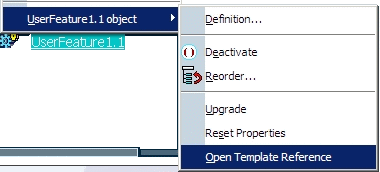Create a 3D Shape Representation identical to the
one below.
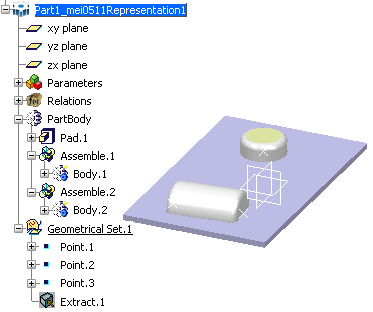
Note:
Datums features
that cannot be calculated cannot be inputs of User
Features.
Click  and select Knowledgeware > Templates > Product Knowledge
Template workbench.
and select Knowledgeware > Templates > Product Knowledge
Template workbench.
Click User Feature
 .
The User Feature Definition dialog box is displayed.
Replace the default User Feature name with a new name, Pad2 in this
example, and select the components that will make up the User Feature
in the specification tree. The dialog box looks like the one below:
.
The User Feature Definition dialog box is displayed.
Replace the default User Feature name with a new name, Pad2 in this
example, and select the components that will make up the User Feature
in the specification tree. The dialog box looks like the one below:
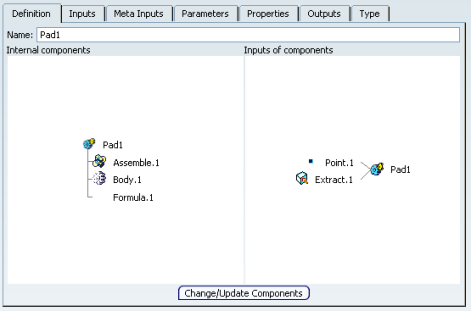
Right-click on the Assemble.2 object in the Selected
components section and click on the Add all authorized inputs as
shown here below:
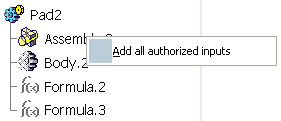
Select the Inputs tab and click Point.2
Select any of the available inputs and click either
on
 or
or
 icons to reorder the selected one. Point.2 is now placed under Point.3.
icons to reorder the selected one. Point.2 is now placed under Point.3.
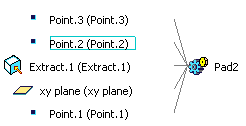
Click OK in the dialog box. The Pad2
User Feature is added to the specification tree.
Save your file in the database.
Note:
If you are a DS Passport customer, you can read the articles QA00000005128, QA00000005126, QA00000005125, QA00000005123, QA00000005122.
Note:
When creating the User Feature, you can add a link between the User Feature instance and its references. This link enables you to open the representation containing the User Feature reference using a contextual menu on the User Feature instance .
By default, this option is enabled. If you want to disable it definitively, select the Properties tab in the User Feature Definition window and uncheck Set Reference/Instance link in the Instantiation field.
The link between the User Feature instance and its reference can be seen using Edit > Links&Relations or the Impact Graph. When working with a User Feature instance, the contextual menu enables you to open the User Feature reference.
